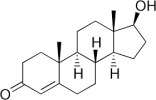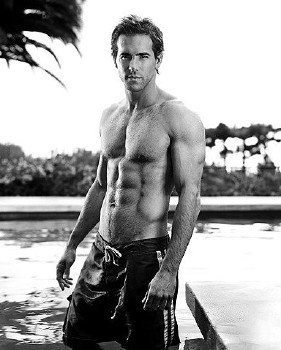by Lee Boyce
If you've ever lived in a place where the temperature routinely drops to zero (you poor, poor bastards), you know the Automotive Gospel by heart: start your car and let it run for at least a few minutes before driving.
Why "warm up" your car? Two reasons: so the oil can thin and circulate (improving your car's performance), and because no one wants to freeze their ass off while driving a '77 Chevette to the gym.
What's this got to do with you? Well, jumping straight into your working sets with heavy weight without a proper warm-up is like starting your car and immediately driving on the highway while it's colder than a witch's tit outside. It's also a good way to guarantee you'll get ho-hum results since your muscles aren't prepared.
If "warming up" before your workout—or God forbid, during your workout—doesn't sound like any fun, well, I've got to agree with you. But as you know from reading TMUSCLE, if you want uncommon results you gotta do uncommon things. And since most guys' idea of a warm-up is a few jumping jacks it's easy to see why they have average bodies: they're just not willing to put in the work. You're different.
This article by Lee Boyce is a checklist for the perfect workout, and while it goes over some warm-up techniques, the coolest part is the "dirty tricks." These are exercises and strategies Boyce and other coaches recommend to get the most work out of your muscles and ensure you're building the best physique possible.
Now who wouldn't want that?
— NG
The Problem
Having the right exercises in your workout is great, but you should also be focused on priming your muscles to lift heavy weight and get bigger. You want your sets to be worth something, right?
In my gym it's rare to see a guy go through a sufficient warm up and activation exercises before and during his workout in order to squeeze the most juice from his muscles.
From my experience, most guys fall into two warm-up categories:
The "Jog on the Treadmill" Guy
Sure, doing some kind of physical activity is good for elevating your heart rate and increasing overall body temperature, but what this guy doesn't understand is that his seemingly innocuous warm-up is really just getting his body accustomed to producing force in one direction. And if your program has you doing a variety of exercises that require different movement patterns (which it should) you'll be unprepared to get the most out of those exercises.
The "Warm-up Set" Guy
This is the guy who'll start his workout cold, walk up to the bar, and do a set with 30 percent of his one-rep max to "get warm." How sad. This completely rules out whether or not certain muscles are being inhibited due to tightness, or if other muscles are being compensated for due to lack of stability at load-bearing joints.
With both of these examples, better results would come from asking one question: what muscles you are trying to work during the training session? From there it's simply a matter of getting them warm, ready, and stimulated. (Insert your own sex joke here.)
But before we talk muscle, let's quickly start with the foundation: your joints.
Preparing for the Perfect Workout
The "Big 6" static stretches
The first thing we want to focus on is increasing the range of motion at as many joints as possible, preferably all the muscles you plan on training and the surrounding muscles. So if it were "chest day" you'd stretch your chest, triceps, and shoulders. If you were doing a total-body workout you'd stretch everything.
It's been argued that static stretching lowers the muscle's neurological involvement and essentially weakens them. That may be true if you static stretch and then jump right into hardcore lifting, but we're going to make sure that before you begin your first set your nervous system is amped and ready.
You only need to do one set of each stretch, but make sure to hold it for 30 seconds before moving on.
Quads — Get into a lunge position with your knee on the floor and hold on to your rear foot. Be sure to stay tall, and if possible, reach for the ceiling with the same arm as the leg being stretched. This will open up the iliopsoas group.
Hamstrings — While standing, put your heel on a bench. Make sure your knee is as straight as possible. Hold your pelvis with your hands and stand tall. Now simply tilt your pelvis forward until you feel a deep tweak along the hamstrings belly. It won't take much. Avoid rounding the lumbar spine.
Chest — Face a wall, and place one palm (reaching with a straight arm) against the wall at eye level or slightly above. Begin slowly moving the entire body away from the wall, while maintaining full contact with your palm. When you feel a good stretch through the chest, deepen the stretch by a) depressing your shoulder and b) rotating your elbow towards the floor.
Lats — Hold any support beam (the ones on a universal cable system work well) with a palms-out grip. In other words, make sure your arm is internally rotated so your palm faces away from the body. Bend forward with a flat back while holding the beam and "fall away" from it. Let your weight fall into your seat, so your body is only being held by the hand holding the beam. Make sure to unlock your shoulder. This is an instance where we don't want to activate the lower traps. Push your chest as close to the ground as possible and hold.
Upper Traps — Hold a light dumbbell in your left hand. Let it hang straight down by your side as you take your other hand and place it on the rear left side of your head. Gently pull your head downward and to the right. Depress your left shoulder at the same time to feel a deep stretch through the upper traps. Make sure not to tense the arm holding the dumbbell. Repeat on the other side.
Glutes — Sit on the floor as though you were about to sit cross-legged the way kids do, but put one leg straight back. Lean with a straight back over your knee.
Mobility and dynamic exercises.
Now that the muscles are loose, your joints still need a bit more work. To further maximize the ranges of motion it'd be smart to go through a few mobility drills to release more synovial fluid and lubricate each joint, especially the hips and shoulders since they are responsible for more degrees of movement.
Key exercises to focus on are forward leg swings, side leg swings, and arm circles.
Remember to gradually increase the range of motion and speed with each rep, and focus on fully relaxing the muscles involved. The mobility drills actually have a twofold benefit, since they will also dynamically stretch the muscles surrounding the joint.
The Perfect Workout — Getting Down to Business
Most guys are lucky to complete three or four sets that are, as Dave Tate says, "worth a shit." The other sets simply go to waste. Don't believe me? Well, how many times during an average workout do you feel that your muscle fibers were completely active and your tempo and breathing were perfect? How often do you focus on maximal contraction?
Despite what you may tell yourself, the reality is technique becomes compromised without a watchful eye, strength decreases, and muscles may get tight or deactivate themselves.
Here's how to get the best out of every set.
Prime your nervous system.
After doing static stretching and dynamic flexibility, your muscles are ready to actually do something. It's time to establish a connection between your nervous system and your muscle fibers.
As you know by now, you need to hit the high-threshold motor units. One of the most effective ways to do this is by taking a movement pattern you plan on doing that day and doing a ballistic variation of the same movement.
Gonna bench press? Do some plyometric push-ups. Gonna squat? Do some weighted squat jumps. You can read an article about ballistic training for muscle here.
The point is not to fatigue the muscles, but to stimulate them. For this reason the reps and sets should stay quite low. I usually recommend three sets of five reps without a lot of rest.
Doing these ballistic moves before our loaded sets means that we'll have more fast twitch muscle fibers involved in the lift for a greater portion of the set, which will contribute to more force production, and ultimately, more hypertrophy potential. This puts a couple of "warm-up sets" to the crypt any day of the week.
Static stretch the antagonist.
Stretch during the workout? I gotta be kidding you, right?
The truth is, dulling the nervous involvement of the antagonistic muscle (the muscle not currently working) can make the working muscle take on more responsibility in the lift, leading to more strength and motor-unit recruitment.
In virtually any compound movement for the legs, for example, the quads are going to get involved. If you're squatting for quad and glute development it means your quads are probably going to get in the way of developing your posterior chain if you let them dominate the lift. Even with what appears to be correct technique, tight quads and subsequently tight hips can lead to poor rear-side development and wasted sets of work.
A quick way to reverse that effect and make sure you're hitting your glutes hard is to hold a static quad or hip flexor stretch for 30 seconds on each side in between your sets of squats. This will weaken their neurological involvement. Since the quads have now been mildly deactivated, the glutes and hamstrings will step in to bear the load the quads are now giving up. The result? A bootylicious squat.
Want to get stronger on your pulling exercise? Do some scapular activation.
I've found that when it comes to the muscle tissue of the shoulder retractors and depressors, brief isometric holds of about five to ten seconds where you're really focusing on stimulating every last fiber in that muscle can help you get more out of your next set.
For example, the lats are responsible for internally rotating and adducting (pulling inward) your upper arm. So take your arm and do just that. Rotate your straight arm inwards so that your palm faces away from the body, pull the arm back and towards the midline simultaneously. Hold for five to ten seconds and really try to feel the squeeze through your entire lat. Immediately follow this with your set of lat pull-downs or chins.
How about a pressing exercise? More scapular activations!
Doing light sets of back exercises before a pressing exercise will aid your pressing movements since it adds stability to the entire shoulder capsule, which is needed so that the rotator cuff doesn't undergo undue stress.
The added tightness in the upper back muscles help keep the scapulae in a mildly retracted position, so that you'll last longer in your bench press without your shoulders coming up off the bench.
Before your chest or shoulder exercise, do a light set of seated cable rows for 15-20 reps. Use roughly 30 percent of your 1RM. Another good exercise is the bent-over reverse fly with dumbbells, but make sure to use a supine grip (palms face away from the body).
Wrap-up
A solid training program isn't just a bunch of exercises thrown together with random sets and reps. Priming your muscles with warm-up techniques beforeand during your workout will not only help prevent injury but will activate all your muscle fibers, unlock your tightest areas, and make you stronger from set to set. That means better workouts, better muscle growth, and a better body for you.


















